GDC 2022: DAY 4

Written by Nick Foster
Game Developers Conference (GDC) 2022 may be nearing its end, but things are definitely not winding down! The fourth day of GDC was packed with inspiring hardware demos and even more game-changing presentations from some of gaming’s most creative minds. Read on for our favorite parts of GDC day four and a huge Loam Sandbox surprise!

Building Next-Gen Games for PlayStation VR2 with Unity
On day four, I went to an interesting talk presented by Unity regarding its support for PlaystationVR2 games. It highlighted new PSVR2 features like eye-tracking and Foveated Rendering while detailing how Unity will implement them. While much of the talk focused on PSVR2’s exclusive features, it also explored Unity’s broader features and what we can expect regarding game development on the system moving forward.
While URP and Single-Pass rendering have been talked about ad nauseam, I find explanations for some of their advanced uses to be fascinating. For example, I know that you can make a custom rendering pipeline for URP, but I didn’t consider that I could have a pipeline focused solely on UI which can be run separately from everything else.
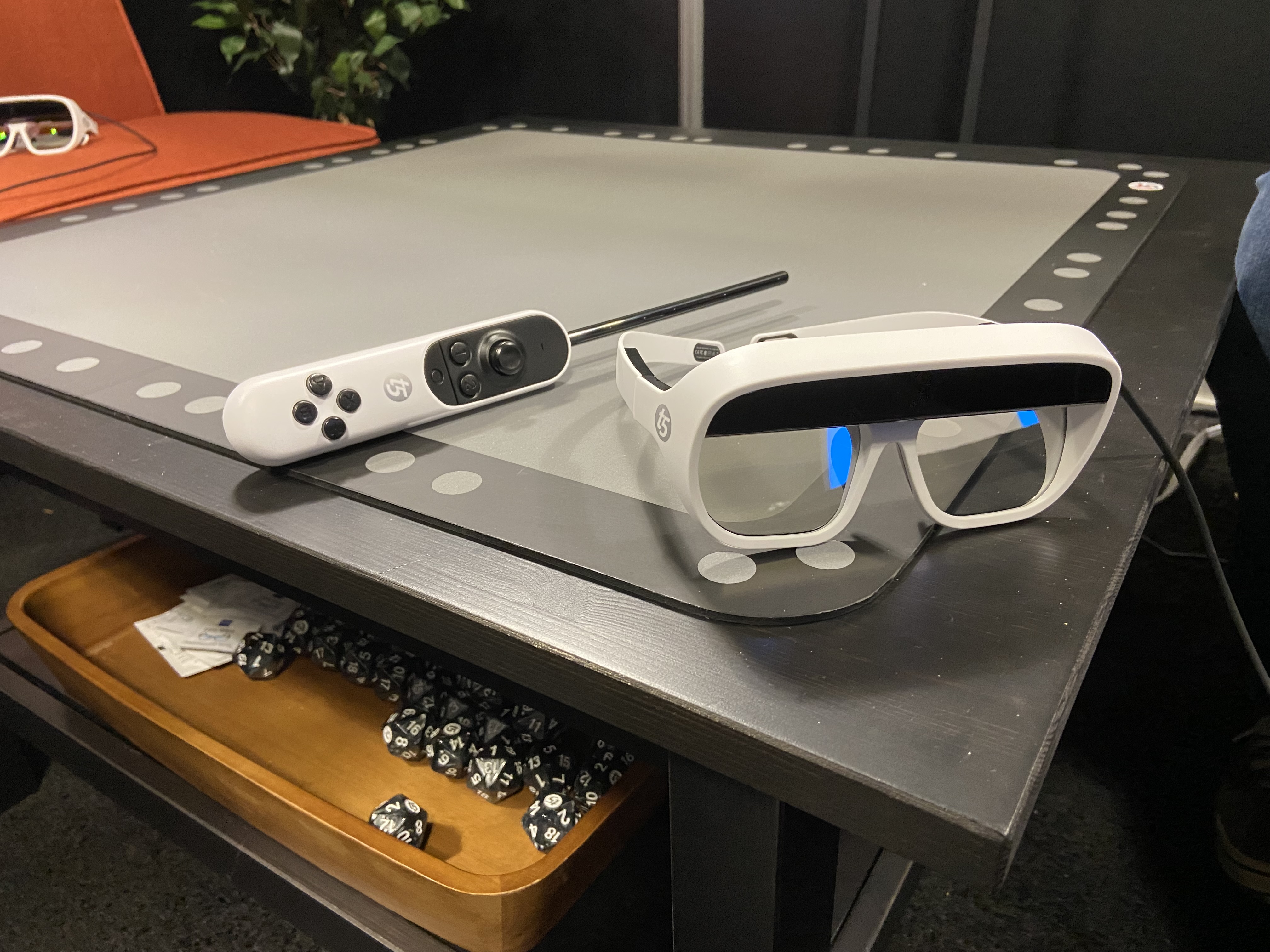
Tilt Five uses AR-enabled glasses and a unique controller to breathe life into our favorite table-top board games.
I also walked around the GDC Expo Hall and saw innovative games with alternative control schemes. The artistry and creativity on display really encouraged me to find new and novel ways to play.
The MAW: Safely Multithreading the Deterministic Gameplay of ‘Age of Empires IV’

Joel Pritchett (Technical Director of Age of Empires Franchise, Microsoft) details the multithreading, debugging, and verification tools built into the game’s engine.
Age of Empires is a large-scale game featuring many, many different units and entities. Whether you are running the game on a single-core CPU or a massive gaming PC, the sim game must always produce a similar experience, so lots of thought went into designing the game’s engine to adhere to this requirement. The game’s developers parallelize units by grouping them into islands — these are groups of units that need to know about one another but not about other islands.
RTSs used deterministic input syncing, and it usually worked fine: the peers agree on input and return the same result. The issue with multithreading, however, is that it was possible for threads to start or stop at different times in different machines, making it potentially non-deterministic. The developers resolved this issue by recording read/write records on data in the engine; if there were any conflicts between peers, they could detect those errors. With this in place, developers could just write code, and whenever they wrote code that would create desyncs, they were automatically and immediately caught.
Understanding Developer Challenges with Localization, Player Support, and More
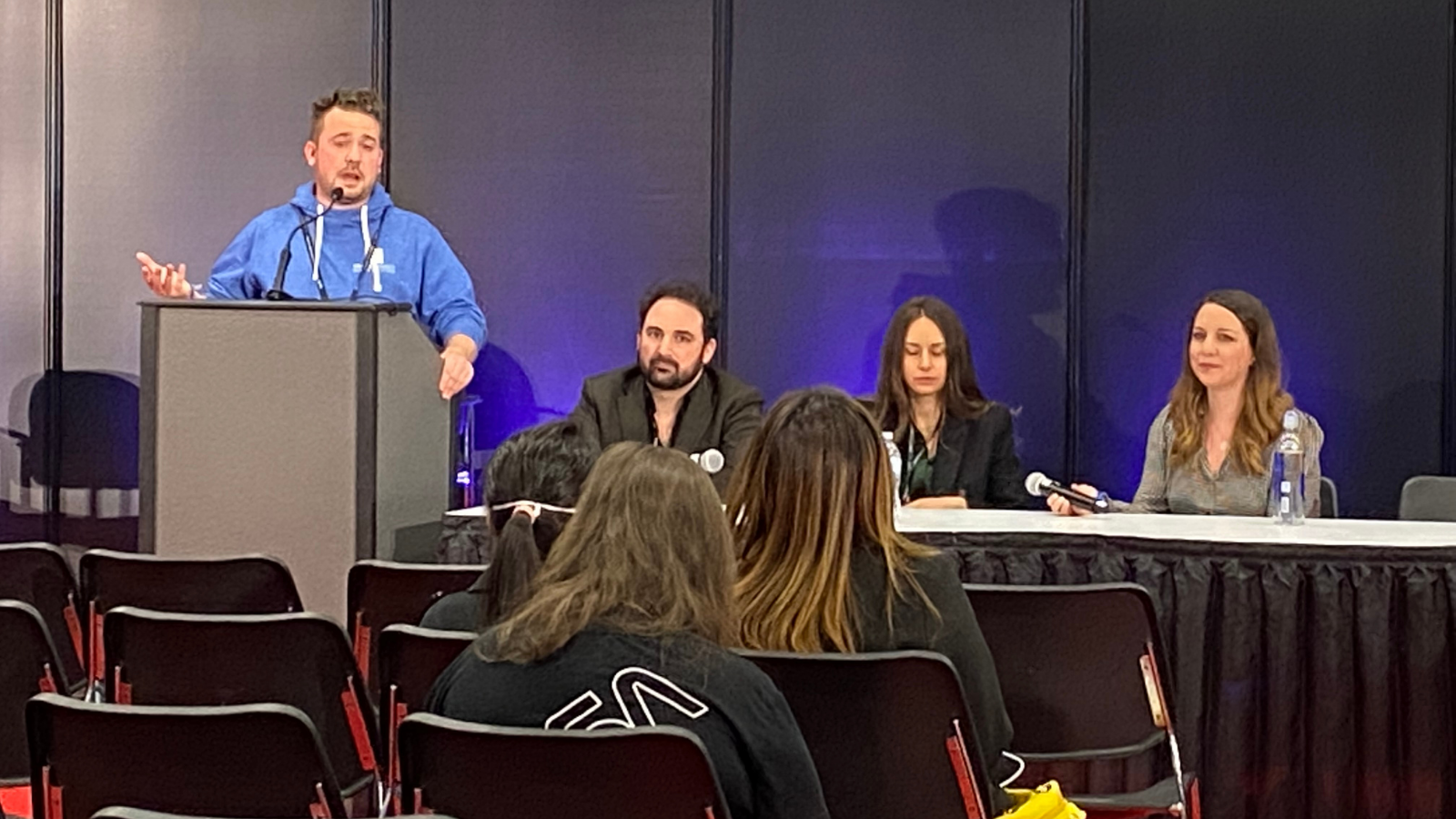
My pick isn’t from day four but rather the end of day three. Annie, the executive producer at Amebous Labs, joined the TransPerfect panel with host Alexander Fletcher (Global Director, TransPerfect Gaming Solutions) and co-panelists Xavier Marot (Director of Production, Focus Home Interactive) and Ninel Anderson (CEO, Devoted Studios).
Together, they shared an insightful discussion regarding how developers can create a seamless experience for players from all over the world. Ninel suggested tapping into the community of players that speak the language you’ve translated your game into and trading them game keys for feedback. Taking this step will not only help the developers, but it will make the players feel heard as they offer advice on how to appropriately translate content for their audience.
Annie shared ways to avoid using text in virtual reality, as it is inherently difficult to read large amounts of it in virtual reality. She suggested using iconography and visual diagrams to assist the player in successfully maneuvering throughout a VR game.
Hardware Demo: Tilt Five

Amy and Pierce play an AR board game on the Tilt Five.
We got to have a private demo of Tilt Five, an augmented reality wearable for tabletop games. The weight of this device was lighter than other HMDs and the field of view is impressive (especially for the weight). I think we’ll be putting an order in for a couple of these so that we can experiment with creating content for this device!
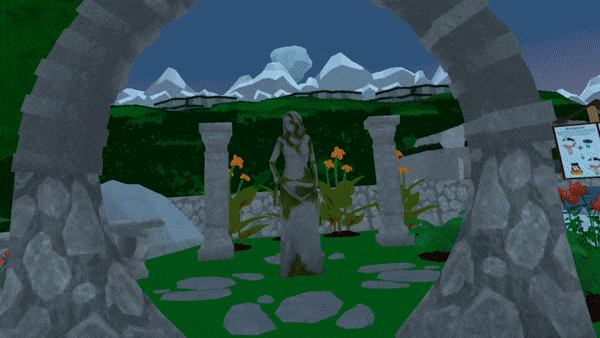

Written by Nick Foster
GDC 2022: DAY 3

Written by Nick Foster
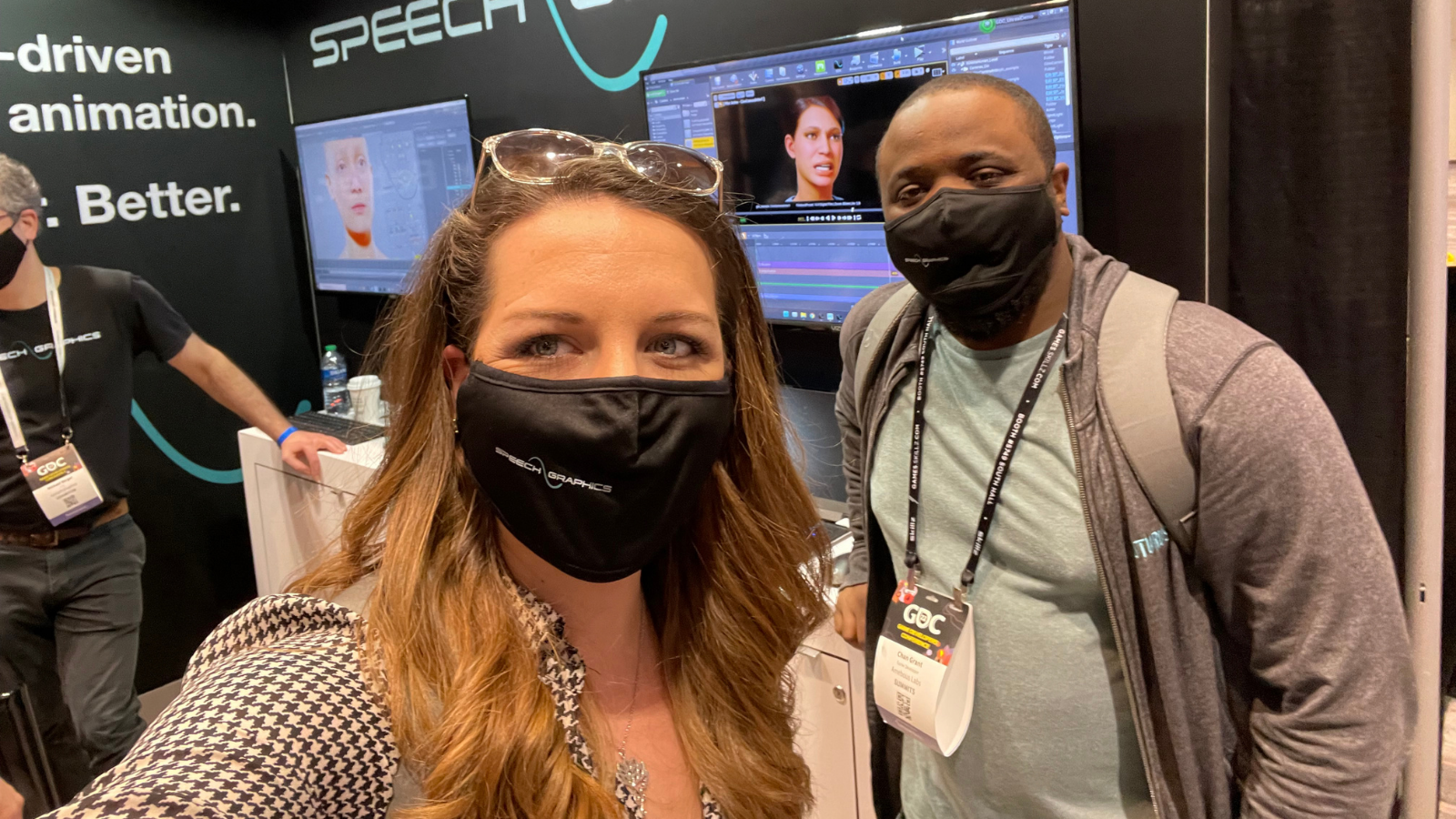
The Fine Line Between Difficult and Impossible: Adventures in VR Development

Devin Reimer (CEOwl, Owlchemy Labs) and Andrew Eiche (CTOwl & Cable Slinger, Owlchemy Labs) describe the difference between ‘impossible’ development problems and ‘very difficult’ ones.
Problem-solving and critical thinking are two major aspects of game development. Getting your game to look and run how you envisioned on various different hardware systems is difficult and, at times, borderline impossible. In this presentation led by Owlchemy Labs, the game development studio behind the hit VR game Job Simulator, Devin Reimer and Andrew Eiche argue that the best development rides the fine line between an impossible problem and a daunting challenge.
The Owlchemy team explained how something impossible feels the same as something very difficult, but impossibility can only be factored in when looking at the overall project holistically. Each individual issue may be difficult, but when you have too many difficult problems, then the entire project becomes impossible. During the development of Cosmonious High, Owlchemy Labs realized the importance of being flexible with your game’s requirements — the size and scope of Owlchemy’s original vision for the game had to be scaled back in order to effectively optimize the game.
Three Opportunities to Improve Character Design in the Games Industry

Jessica Tompkins (Senior Researcher, Electronic Arts) shares historical trends in game character design.
The expo show floor opened up today with so much to see and do, but I made it a point to attend Jessica Tompkins’ talk on character design. She shared her findings and ideas regarding how developers can be agents of change at their game studios and improve representation in video games.
She suggested focusing on motivation driven design rather than designing for demographic parameters, going beyond being an ally and actually pushing for change by acting and advocating, and, finally, opening up the conversation while future game industry professionals are in school — it is not a conversation that higher education should be timid about having. Taking these steps will help to push the industry forward and be more welcoming of underrepresented gamers and game developers.
Hardware Demo: Speech Graphic’s Facial Animation Tool

Chan and I got to demo Speech Graphics’ audio-driven facial animation tool. It was fantastic seeing how their product creates extraordinarily realistic face and mouth movements from just a single audio file. Tools like these will be monumental in expediting production pipelines, so I can’t wait to try this for some of our future VR projects.
Serious Games Roundtable
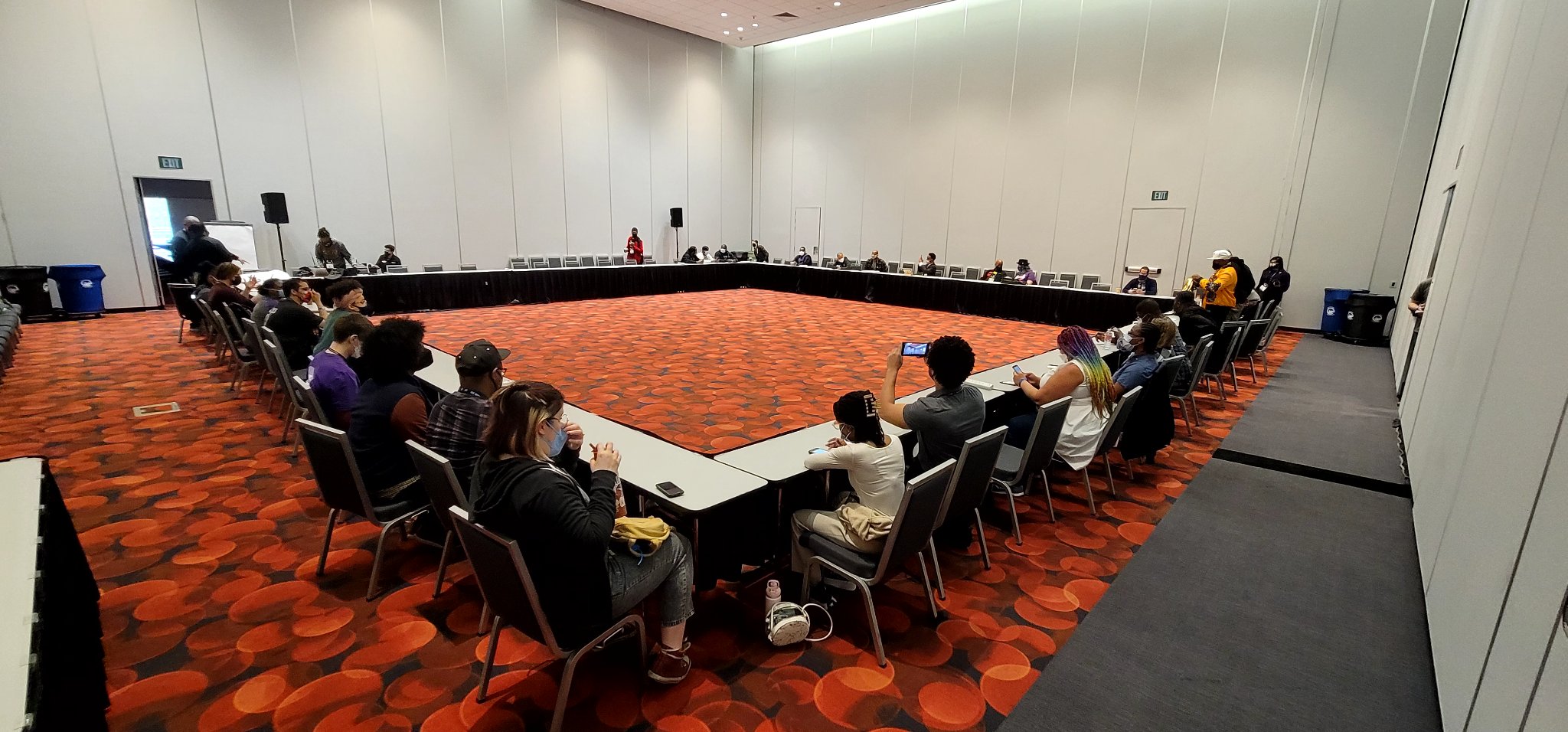
Matthew Lee (Chair, IGDA Serious Games SIG) chats with developers about various styles of game design in a roundtable discussion.
I had the absolute privilege of attending the Serious Games Roundtable on the third day of GDC. I admit I was not familiar with the roundtable format when I walked into the room, so I was very surprised to see a bunch of tables lined up in a circle. Each developer took a seat at the table and a live mic was passed around so that everyone who wanted to talk had an opportunity to do so.
As a lifetime lover and admirer of both serious and educational game design, it was interesting to hear insights and thoughts from fellow developers. While I recognized a few terms tossed around during the discussion, I learned several new phrases and ideas that I absolutely adore and would love to start using regularly.
Game Economies: An Economist’s Perspective
I also attended a talk regarding in-game economies presented by Christopher Smith, the chief economist at Metanomic Ltd. He explained economic theories and concepts that should influence your game design. While most of it went over my head, I thought the talk was incredibly informative, especially considering our studio is currently supporting Loam Sandbox with post-launch content.
As a lifelong admirer of both serious and educational game design, it was interesting to hear insights and thoughts from fellow developers. While I recognized a few terms tossed around during the discussion, I learned several new phrases and ideas that I absolutely adore and would love to start using regularly.
Understanding Developer Challenges with Localization, Player Support, and More
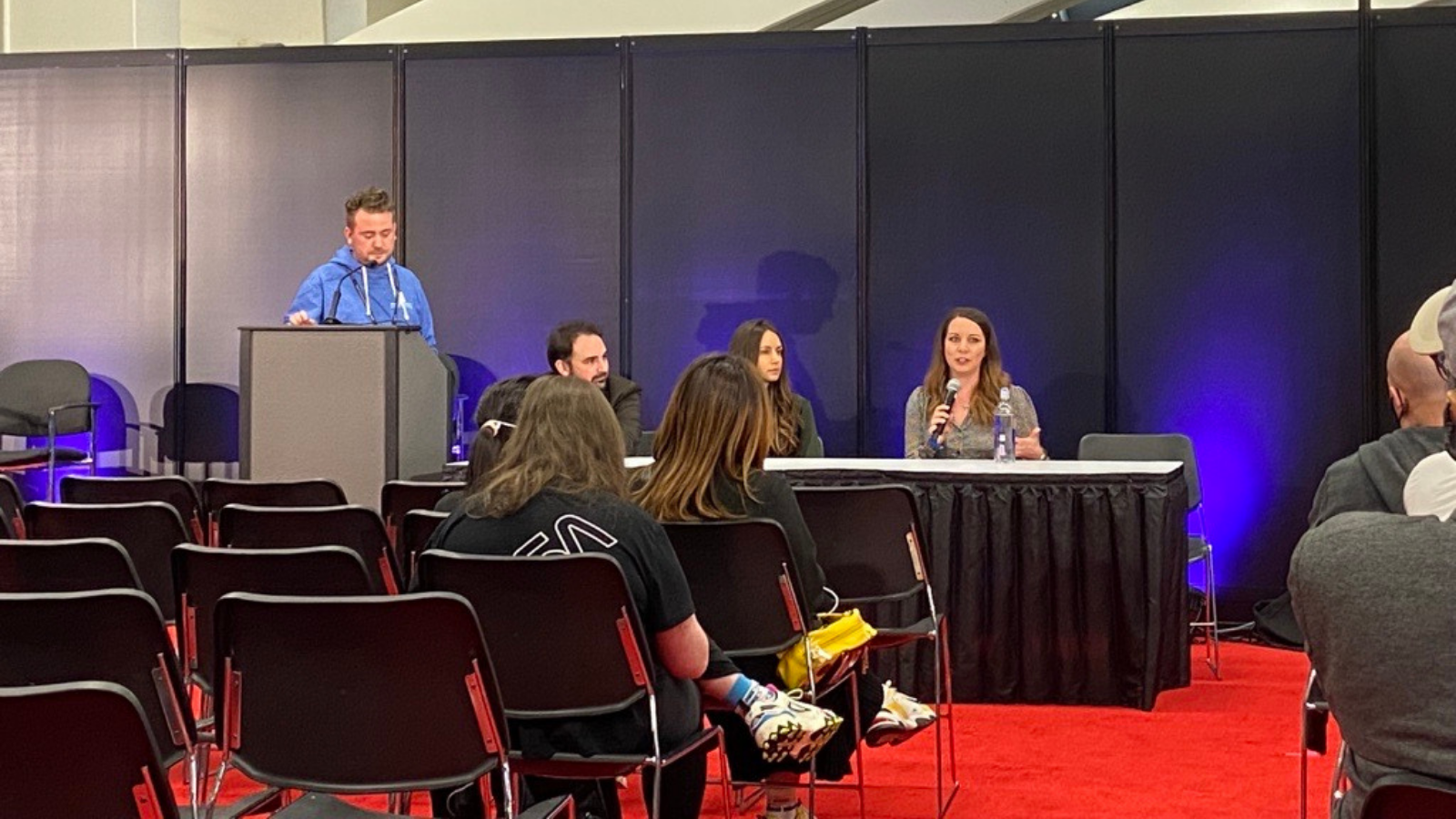
Annie shares VR game development problems and the best ways to tackle them.
During day three of GDC, Annie also joined Alexander Fletcher (Global Director, TransPerfect Gaming Solutions), Xavier Marot (Director of Production, Focus Home Interactive), and Ninel Anderson (CEO, Devoted Studios) on the GDC Industry Stage for a panel discussion exploring real-life game development issues and scenarios.
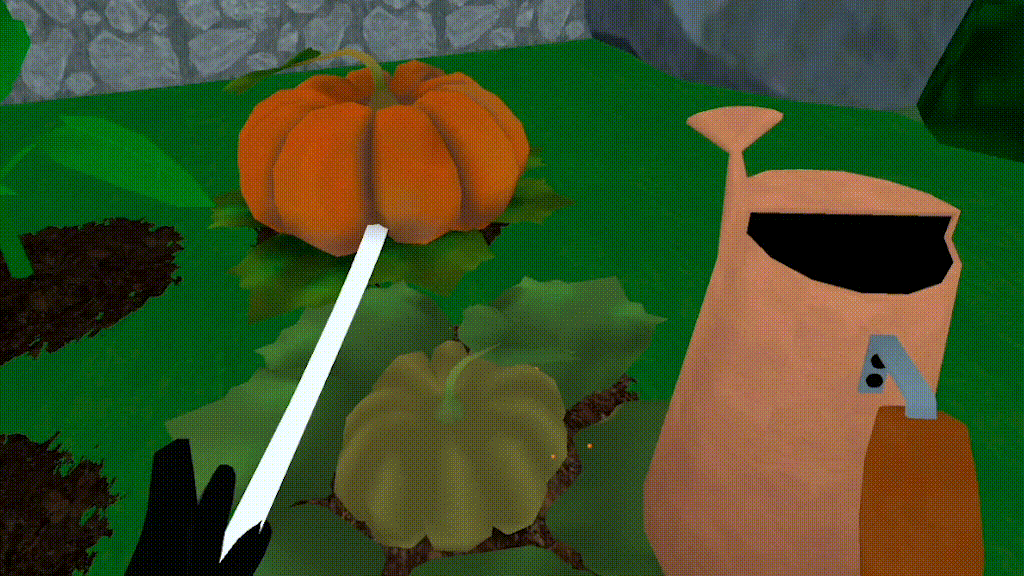

Written by Nick Foster
GDC 2022: DAY 1

Written by Nick Foster

Future Realities Summit: How NASA Has Translated Aerospace Research into Biofeedback Game Experiences

It was fascinating to see how NASA’s advanced biofeedback device research has been integrated into games. As the technology advanced, biofeedback was used to do psychophysiological modeling in virtual reality. The ability to track one’s heart rate and frontal alpha has produced more effective conflict de-escalation training, leveraging biocybernetic adaptation. Applications utilizing this technology have also helped researchers further understand the brain functioning of individuals with autism and ADHD.
Animation Summit: Animation and Customization in ‘The Sims 4’
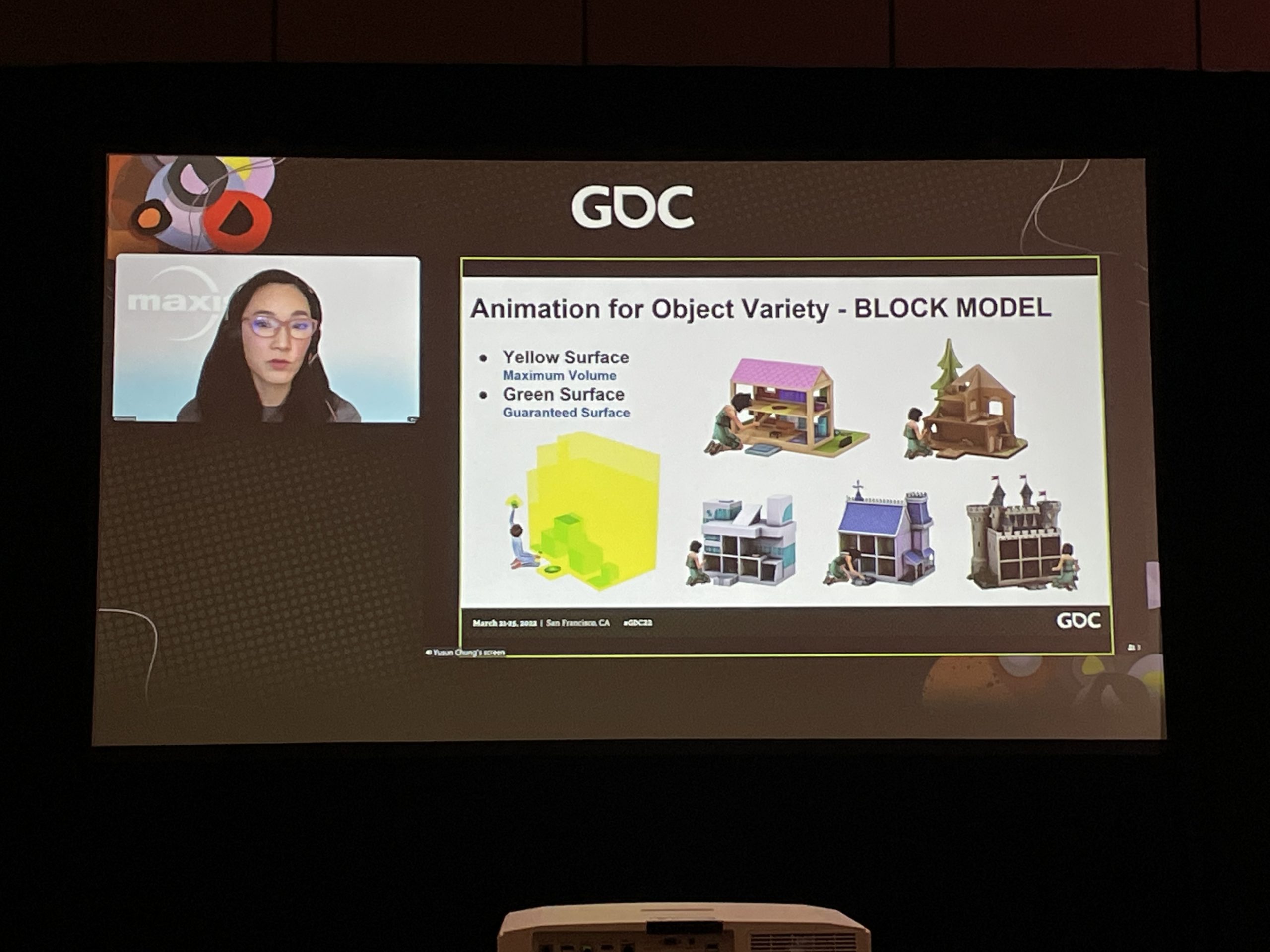
Yusun Chung (Lead Animator, Electronic Arts) analyzes aesthetic considerations and implementation workflows necessary to create animations for customizable characters, clothing, and interactable objects.
Pierce and I attended a great session covering the animation and customization in ‘The Sims 4’. This was especially of interest due to our future goals of implementing customization in Loam Sandbox. It was helpful to learn about the importance of object variety when an asset type must feature animations or interactivity. By setting parameters for artists, an asset’s core interactivity can stay the same for variants while the outer shell can be as creative as the artist wants.
Future Realities Summit: Up Close & Virtual – The Power of Live VR Actors

Alex Coulombe (Creative Director, Agile Lens: Immersive Design) details the techniques, tools, and technology he uses to create compelling VR shows.
I attended a panel called Up Close & Virtual presented by the CEO of Heavenue, Alex Coulombe. He discussed his company’s experience creating a live VR theater performance. In his performance of the Christmas Carol, various techniques and technologies combine to create a one-man show for audiences to enjoy in VR. I was absolutely impressed by the idea and I wouldn’t mind exploring more of it in the future. We could be seeing the creation of a new type of theater that is solely unique to VR!
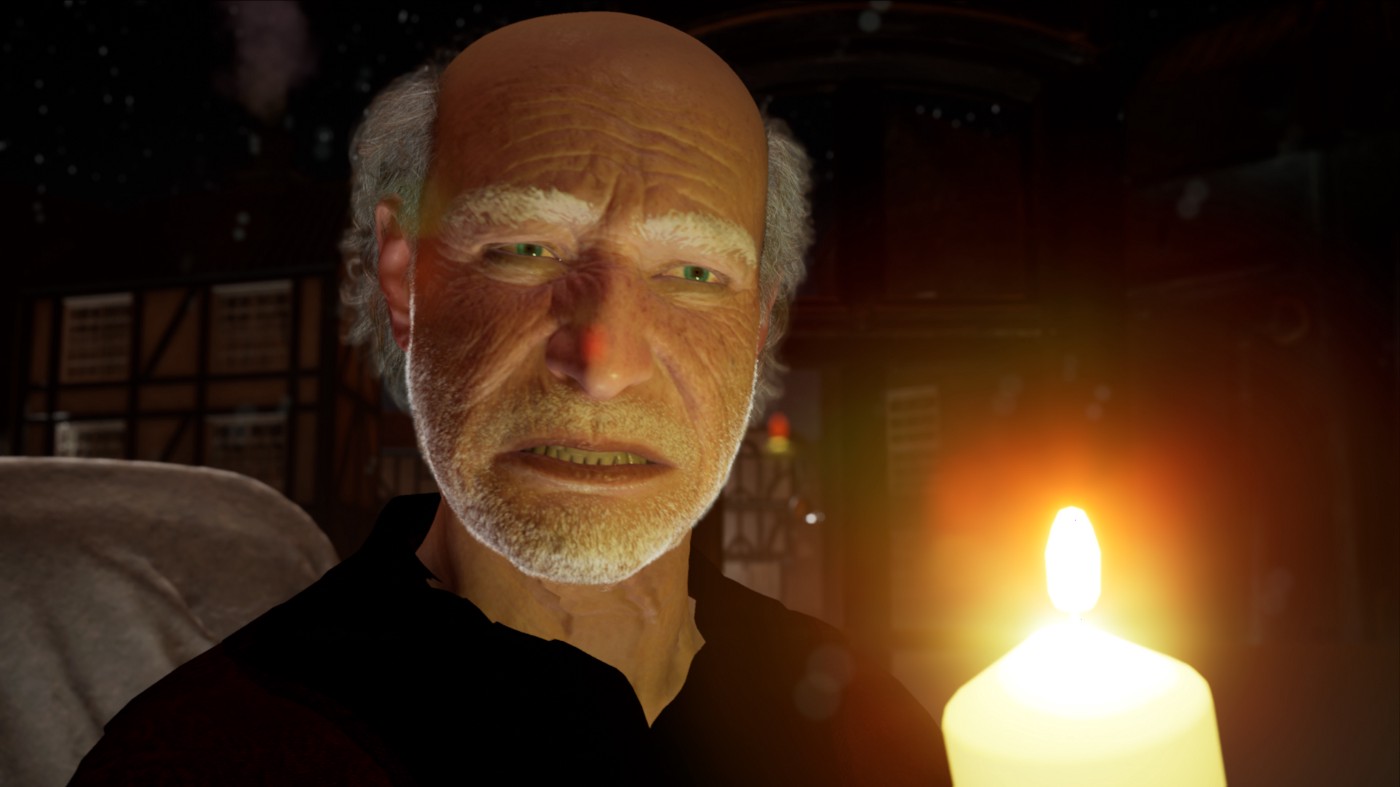
Honestly, talking to fellow developers throughout the day has been among the real treats of GDC. I’ve met several VR developers, and it’s interesting to hear their opinions and thoughts on game development and existing experiences for VR platforms such as PSVR, Oculus/Meta, and Vive.
Future Realities Summit: Hands Best: How AR & VR Devs Can Make the Most of Hand Tracking
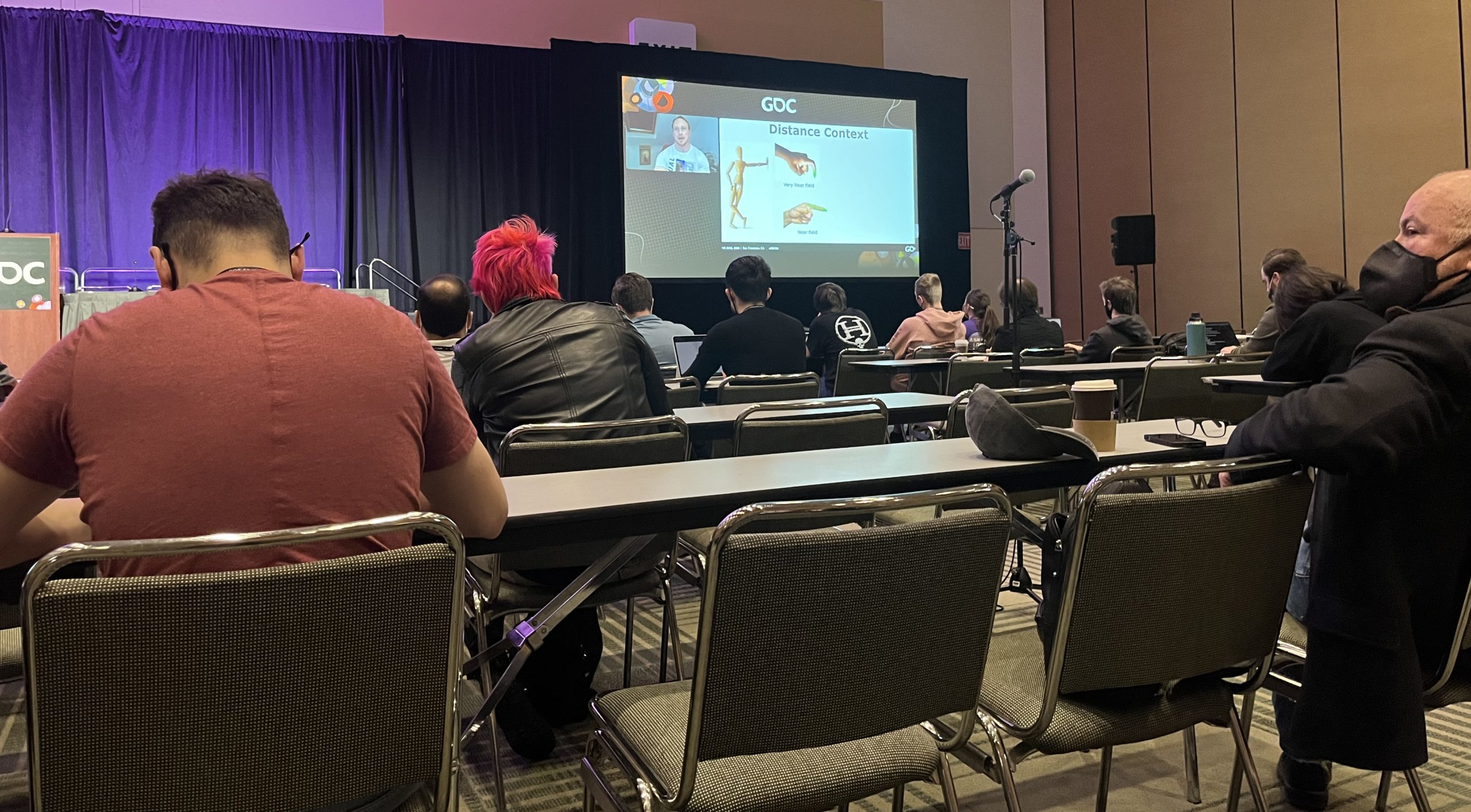
Brian Schwab (Director of Interaction & Creative Play Lab, LEGO Group) and John Blau (Game Designer, Schell Games) share their philosophies for designing hand tracking in VR.
VR game development forces you to reframe the way you think about your hands and the many ways you use them to interact. It was interesting to hear John and Brian refer to hands as systems through which we attain information about the things around us by reaching out and touching or gauging distance.
There are so many different factors to keep in mind when designing and implementing hand tracking for your VR apps such as user comfort, cultural differences, and the tracking complexity of your experience. However, as a general rule of thumb, developers should first identify the type of experience they want to create before they begin designing any hand tracking for it. Once you’ve realized this, choosing a combination of interaction models to match your goals can become a less overwhelming process.
Visual Effects Summit: How to (Not) Create Textures for VFX

Simon Trümpler emphasizes how using photos and third-party assets saves time when making textures.
Many artists feel like creating new textures for visual effects using existing photos and third-party assets is cheating, but Simon dispelled these common beliefs and showed us how we can take a base asset and customize it in a way that makes it our own. His advice was to focus on getting assets to the “good enough” stage because, if you find additional time later on in the game development process, then you can fine-tune them to have increasingly customized looks.
One of my favorite tricks he demonstrated was taking a picture of a forest, flipping it upside down, bumping up the contrast, then combining it with other water effects he had already created. The result was a waterfall that appeared to have ripples and movement. Had he painted each line by hand, it would have taken significantly longer to create. He wrapped up the talk by encouraging artists to share their expertise and learnings on social media using #VFXTexture to streamline the texture creation process for fellow artists.

Written by Nick Foster
TAKES ON MULTIPLAYER IN VR

Written by Chan Grant
The current gaming landscape has been increasingly defined by multiplayer games, with the single-player experience taking a bit of a backseat. The most popular game genre (or at least the highest profile) in America has the shooter, and all its variations in the last two decades. From Halo to Fortnite, a large part of what has drawn people is the multiplayer aspect. The rise of esports into a billion-dollar industry pushed a further emphasis on multiplayer games. Several games use multiplayer as an incentive to continue paying money into the system, i.e., games as a service. Yet, in the virtual reality (VR) space, multiplayer games have not been a big focus.


I suspect that we will see a boom in multiplayer VR experiences.
There are several games with multiplayer that are fun, exciting, and all-around good, but the industry seems to be focusing more on developing a single–player experience for now. There is a couple of reasons for this that I can figure out. Running a multiplayer game requires a lot of legwork, both before and after the game is released. Server maintenance, anti-cheat policies, and practices, net code, handling lag times, dealing with differences in terms of hardware (such as crossplay), etc., is a lot of work. VR systems are also solitary devices. Unlike consoles or even computers, two players cannot interact with the same headset simultaneously. While an Oculus Quest 2 is, as when this was written, $300-400, it is a lot to ask a parent to buy more than one if they want all their kids to play together. Despite these setbacks and limitations, there are several ways and examples of VR multiplayer working that others can examine and work with. I will be dividing these takes into two strands of thought, symmetrical and asymmetrical multiplayer.
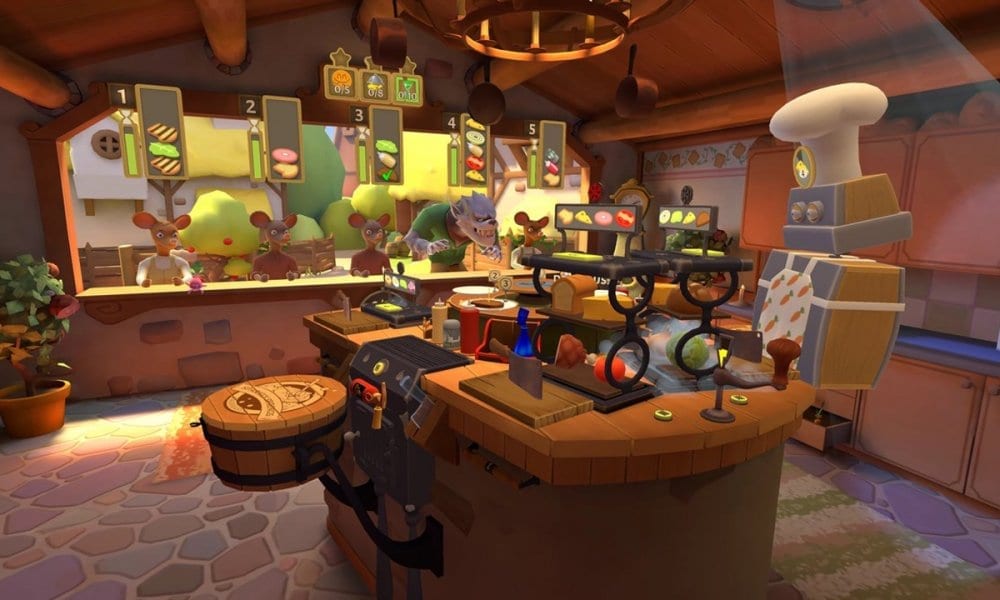
Cook-Out: A Sandwich Tale
The traditional take on multiplayer in general is what I would call symmetrical multiplayer. Both players are engaged with the game in the same way (for the most part). Whether that be a local co-op where two or more players are playing on the same system or an online co-op where players connect to a server, they are still interacting with the same game locally. Even if the players have distinct roles in the game, they can switch between them without stopping using the system.
Cook-Out: A Sandwich Tale in VR, available on Oculus Quest, where the player must focus on making meals to deliver to hungry customers. Each customer has specific preferences, and they want a sandwich that fits what they want. It is a fast and frantic game, even in single–player, but the intensity increases when playing with a group. Suddenly, you must coordinate with other people and try not to get in each other’s way. If you are cutting the bread, you need to make sure that everyone else knows and can focus on something else, like, oh, I don’t know, prepping the freaking meat for the sandwich?!
Another game that interestingly plays with the symmetrical multiplayer is Star Trek: Bridge Crew. In this game, each player takes over a crew member’s role on a Star Trek starship and has various encounters with the Star Trek universe’s aliens and circumstances. This game does not necessarily require strict or fast reflex but an ability to perform your task well.

Star Trek: Bridge Crew
Asymmetrical multiplayer is a game where two or more players do not engage the system in the same way while still playing. Please note this is not crossplay. In crossplay, two or more users are playing the same game while on a different gaming system. Functionally, the two users are playing the game in an identical way outside a difference of hardware. Asymmetrical multiplayer is where the users play the same game but do not use the same hardware and are not playing with the same rules.
One example of this is Keep Talking and Nobody Explodes. In this game, one player is tasked with defusing a bomb while others feed that player instructions. The player who defuses the bomb doesn’t have access to the instructions that other players have. The defuser relies entirely on the instructors to give the correct instructions. The instructors cannot see the bomb and thus need the defuser to describe it to be able to provide proper information. Both sides have an important yet distinct role, and the game’s success relies entirely on both sides being able to do their job well. Importantly, this game doesn’t require both players to own a headset. The instructions for defusing the bomb are available online, and as long as one person owns a headset, the game can be played.
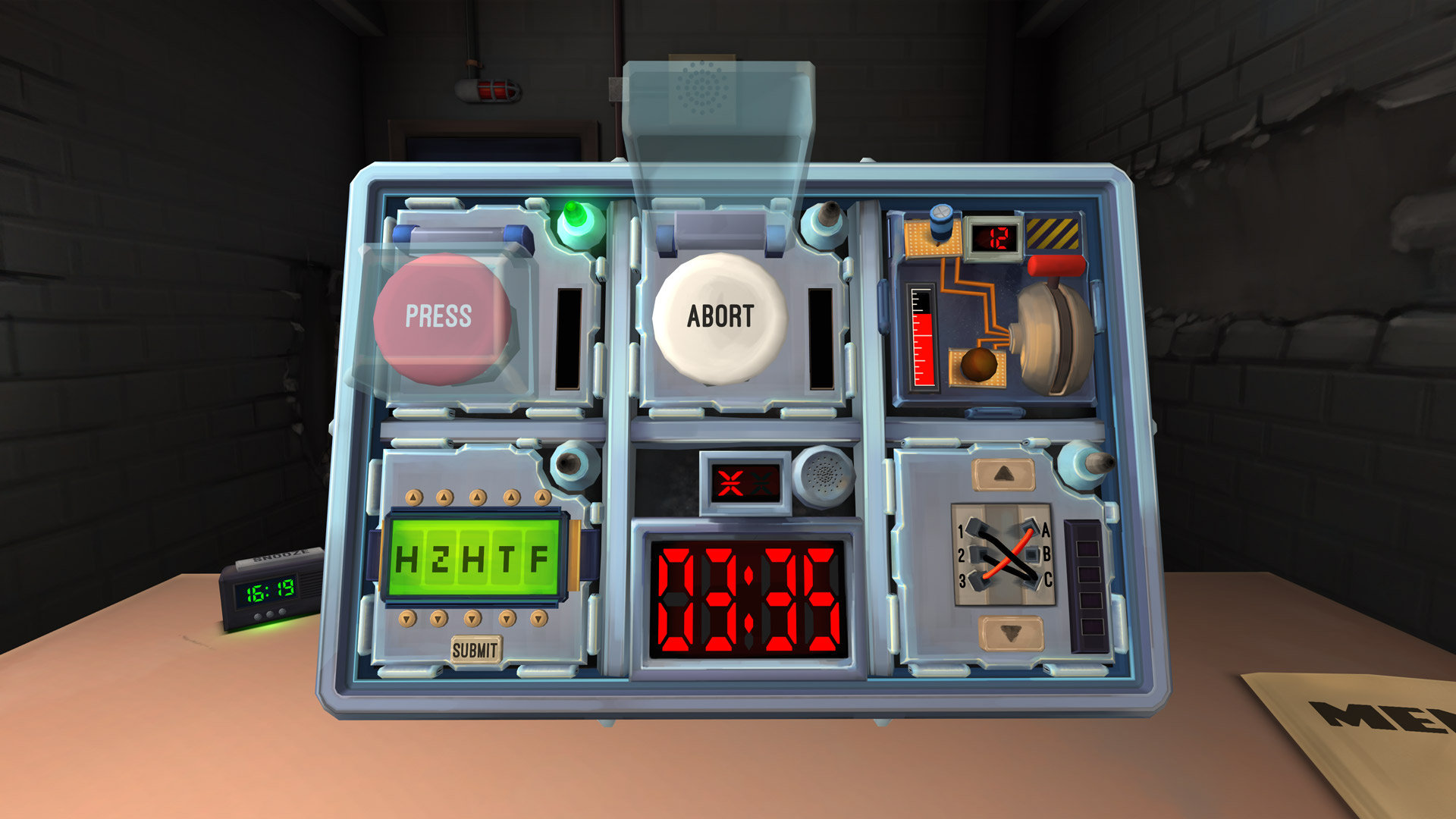
Keep Talking and Nobody Explodes
I feel that some of the interesting and memorable multiplayer games that will be released in the future will follow this asymmetrical approach. It certainly will act as an effective gateway for new players to get involved. Those who are too young, too old, or unfamiliar can still play the game without being in the headset. The other game system can be anything from a phone app to a board game to an entirely different video game. Imagine two people playing what are supposedly two different games to turn out for the games to influence one another?
With the release of the Oculus Quest 2, the barrier to entry for high-quality VR experiences has never been lower. More people own VR systems now than ever, and all industry forecasts indicate that the number will only increase. More of these new players are going to want to play games with their friends and family. As a result, I suspect that we will see a boom in multiplayer experiences. It will be interesting to see the various takes that developers would consider.
